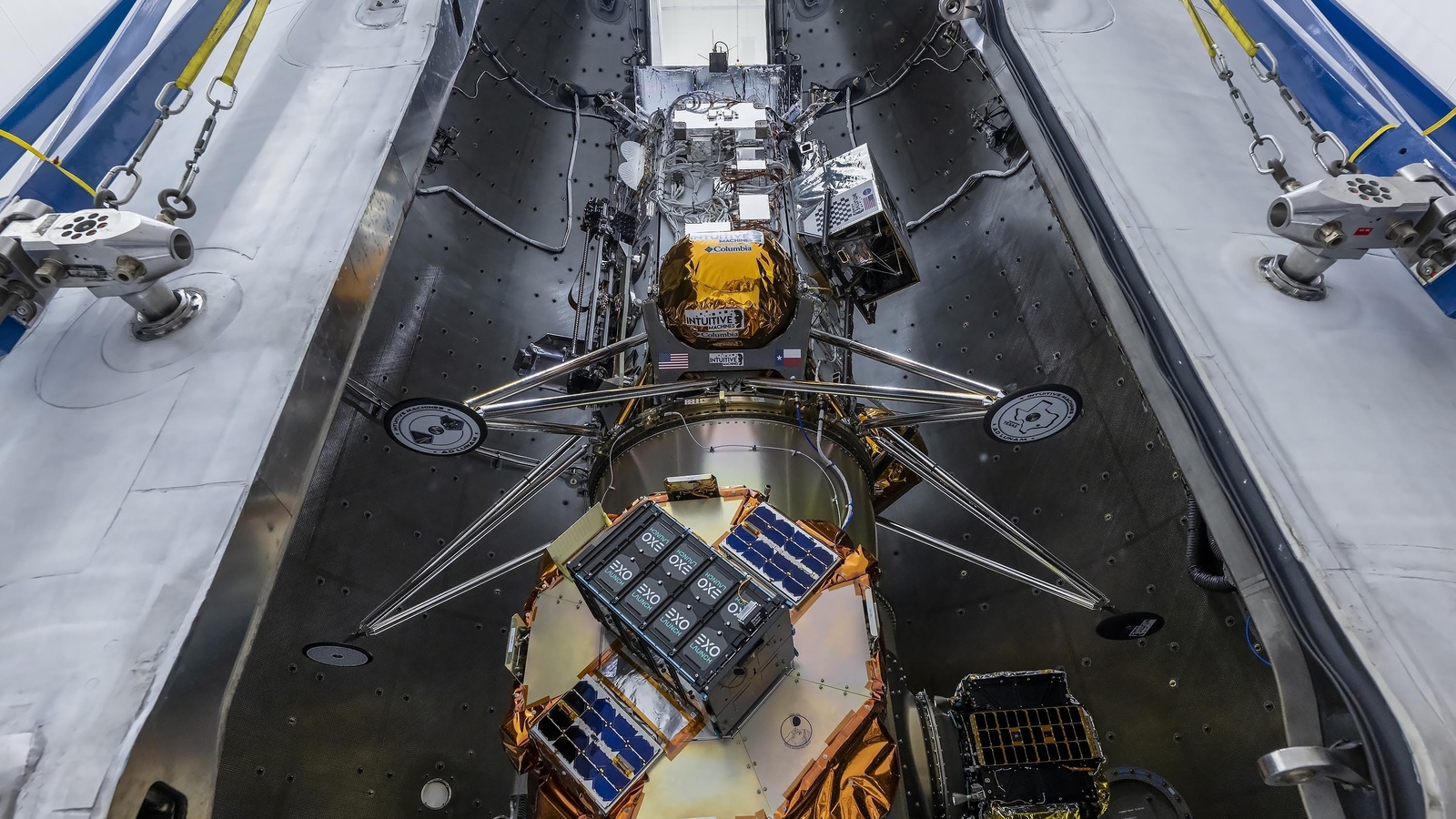[ez-toc]
[ad_1]
What Instruments Will NASA’s Lunar Trailblazer Use to Search for Water on the Moon? | World News
Introduction: Unveiling the Mystery of Lunar Water
NASA’s Lunar Trailblazer mission has sparked immense excitement, as it embarks on a thrilling journey to explore the Moon’s south pole, seeking answers to one of humanity’s long-standing questions: what instruments will NASA’s Lunar Trailblazer use to search for water on the Moon?
The Aim: Unlocking the Secrets of Lunar Water
The Lunar Trailblazer spacecraft, launched aboard a SpaceX Falcon 9 rocket, will enter lunar orbit to map the distribution of water in various forms and track how it changes over time. This mission aligns with NASA’s Artemis campaign, aimed at studying planetary processes, searching for lunar water and resources, and supporting long-term human exploration on the Moon.
Key Instruments on Board the IM-2 Mission
The IM-2 mission, carried by the Intuitive Machines’ lunar lander, is equipped with an array of cutting-edge instruments designed to shed light on the Moon’s surface composition, resource utilisation, and potential water presence. Here are some of the key instruments that will help achieve this ambitious goal:
Polar Resources Ice Mining Experiment-1 (PRIME-1)
PRIME-1 is a groundbreaking experiment that explores the Moon’s subsurface, identifying potential resources. It consists of two critical instruments:
- Regolith and Ice Drill for Exploring New Terrains (TRIDENT): This drill collects soil samples from the lunar surface to detect volatile compounds that could change into gas.
- Mass Spectrometer Observing Lunar Operations (MSolo): This instrument analyzes the samples to detect water molecules and other volatile compounds, providing crucial insights into the Moon’s surface composition.
Laser Retroreflector Array (LRA)
The LRA comprises eight retroreflectors designed to enable precision laser ranging, which measures the distance between the spacecraft and the lander. This passive optical device will serve as a permanent location marker on the Moon, aiding future missions in navigation and scientific studies for decades to come.
Micro Nova Hopper
Developed under NASA’s Space Technology Mission Directorate Tipping Point initiative, the Micro Nova Hopper is an autonomous drone designed for high-resolution surveying of the lunar surface. This hopper will explore permanently shadowed regions, offering new insights into areas that could hold key information for sustaining human presence on the Moon.
Nokia Lunar Surface Communications System (LSCS)
The LSCS, developed with NASA funding, is an advanced 4G/LTE communication system designed to facilitate connectivity between the Intuitive Machines lander, a Lunar Outpost rover, and the Micro Nova hopper. This system aims to demonstrate a compact, efficient communication network that could support future lunar missions and space infrastructure.
The IM-2 mission is a crucial step in unraveling the mysteries of lunar water, and NASA’s Lunar Trailblazer spacecraft is equipped with a range of innovative instruments designed to achieve this ambitious goal. As the spacecraft enters lunar orbit, it will begin its mission to search for water on the Moon, providing invaluable insights into the Moon’s composition and resources.
Stay tuned for further updates on this groundbreaking mission, as NASA’s Lunar Trailblazer continues its quest to uncover the secrets of lunar water and pave the way for future human exploration on the Moon.
Will you be following the Lunar Trailblazer mission? What do you think are the most promising findings that this mission will reveal? Share your thoughts in the comments below!
[ad_2]

Live News Daily is a trusted name in the digital news space, delivering accurate, timely, and in-depth reporting on a wide range of topics.
